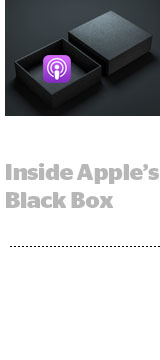
The podcast industry is about to take a bite out of a formerly forbidden fruit when Apple shares its podcast listener data with publishers this fall, and it’s sure to be a hot topic at the IAB’s annual podcast upfront in New York City on Thursday.
In June, Apple said it would share aggregated online and offline listening behavior with podcast publishers for all episodes downloaded through iTunes and its Podcasts app for iOS as part of its iOS 11 update. That’s huge for the podcast industry: Apple captures over half of all podcast listening, but previously kept its listener data in a black box.
Apple’s analytics will provide publishers with a breakdown of listener behavior for content consumed through its app, marking points at which listeners started, skipped or dropped off an episode. It will also share details around whether or not a listener is also a subscriber to that show or if an episode was listened to on or offline.
Most importantly, Apple will tell publishers what percentage of their audience hit play after downloading an episode through its app, “moving from a definition of downloads and subscribers to actual listening,” said Bryan Moffett, chief operating officer at National Public Media, the sponsorship sales arm of NPR.
Podcast publishers had no insight into what happened on Apple’s player after the point of download. Now they’re bracing for the flood of brand dollars that will follow their ability to determine whether or not the majority of their audience heard an ad. Podcast advertising is expected to top $220 million this year, according to the IAB.
“Direct-response advertisers have their own insight into what works and what doesn’t,” said Matt Turck, chief revenue officer at Panoply. “Listener data is very important to brand advertisers.”
But because Apple is only sharing aggregate analytics with publishers, its solution won’t be the catalyst for programmatic podcast ads.
“From an ad tech perspective, this is going to be much more important on the publisher side,” said Erik Barraud, head of product at digital audio platform AdsWizz. “It’s almost like Google Analytics has arrived for podcasts.”
Apple did not respond to requests for comment.
Opening The Black Box
For NPR, which draws 60-plus percent of its 12 million monthly podcast listeners via Apple’s player, Apple’s data lets it narrow the delta between actual and reported podcast listening behavior.
“We’ve had qualitative data on this for years, but we won’t really know until we see the data from the Apple ecosystem,” Moffett said. “These things are really hard to get to qualitatively.”
With insight on listener behavior for a broader swath of their audiences, publishers can better tailor their content to audience preferences. If a publisher notices a huge drop off during the second segment of a show, for example, they can adjust the content or length of the episode to see if that retains listeners, AdsWizz’s Barraud said.
Better analytics will also attract more money to the space from big brands, who have been interested in podcasting as a premium, brand-safe medium but hesitant to spend due to the lack of insights, Moffett predicted.
“This will certainly help bring more legitimacy to the medium,” he said.
Not Quite Programmatic
While Apple’s analytics will give publishers tremendous insight into the listening behavior for their shows in aggregate, it won’t provide granular enough insight to enable a huge boost in programmatic buying and selling.
Many podcast distributors use dynamic ad insertion to target listeners with ads based on demographic data, changing the composition of ads in each episode based on the person downloading it. Apple’s analytics don’t account for nuances in each version of an episode, making the information impossible to transact against in real time, Moffett said.
“If we’re just looking at the listening profile for an episode, that doesn’t take into account that there are 10,000 variations,” he said. “If you’re just looking at a chart that aggregates it all, that involves a lot of blending and smoothing.”
Even if Apple were to provide that level of granularity, the industry would have to agree on a standard metric and measurement protocol before pricing podcast buys on listen-through rates, said Jason Cox, chief product officer at Panoply.
“We want to view 100% of our audience,” he said. “While the extra data from Apple has helped the space a huge amount, it doesn’t immediately change how other platforms will solve against podcast analytics.”
And not all publishers are interested in selling their inventory programmatically quite yet, for fear that CPMs will plummet in a race to the bottom.
“When you start to go into programmatic buying, you’re usually talking about lower-rated and unsold inventory bought as an extremely low CPM,” said Norm Pattiz, founder and CEO of podcast network PodcastOne. “We’re not in the remnant business.”
This post was syndicated from Ad Exchanger.

More Stories
Island Gelato partners with Impact PR
Meta More Than Doubled Revenue From its AI-Powered Ad Tool
How A Digital Media Agency Built Its Own AI-Powered Contextual Targeting Tool